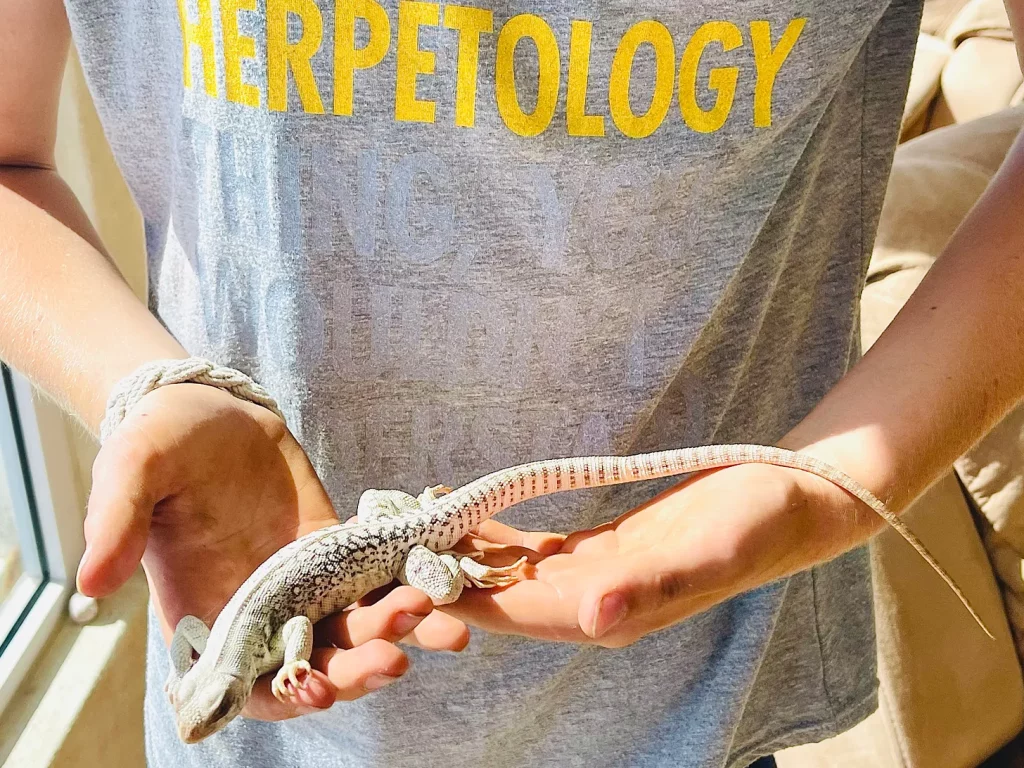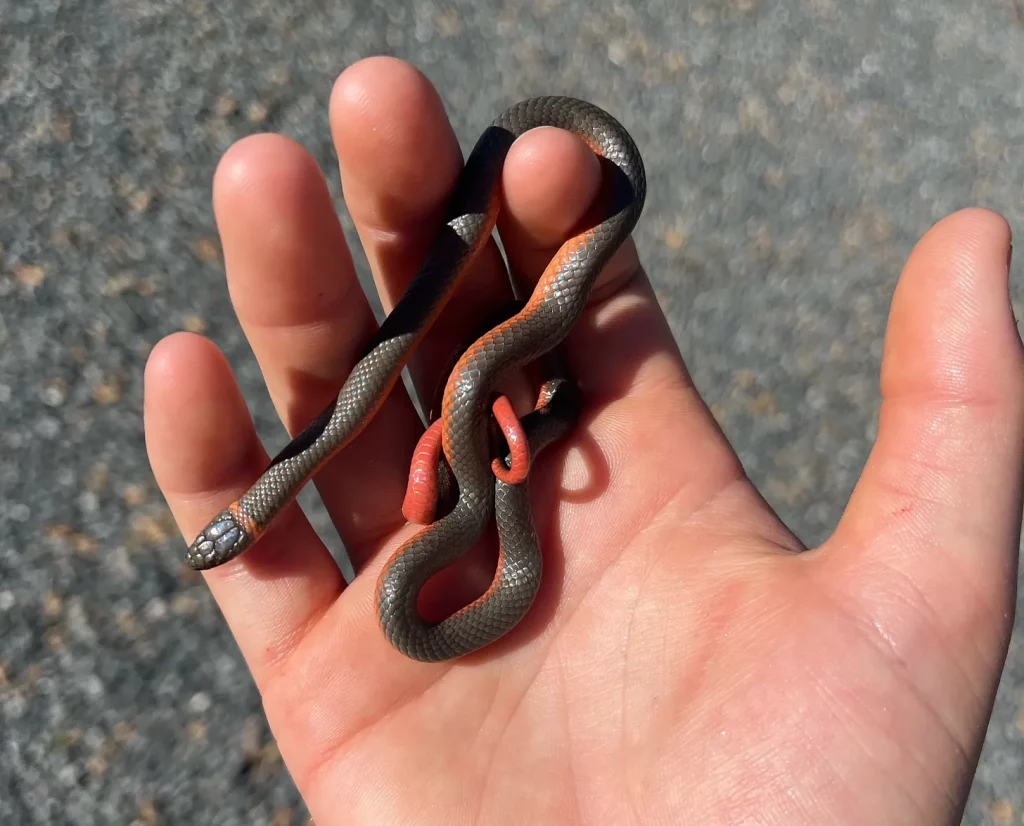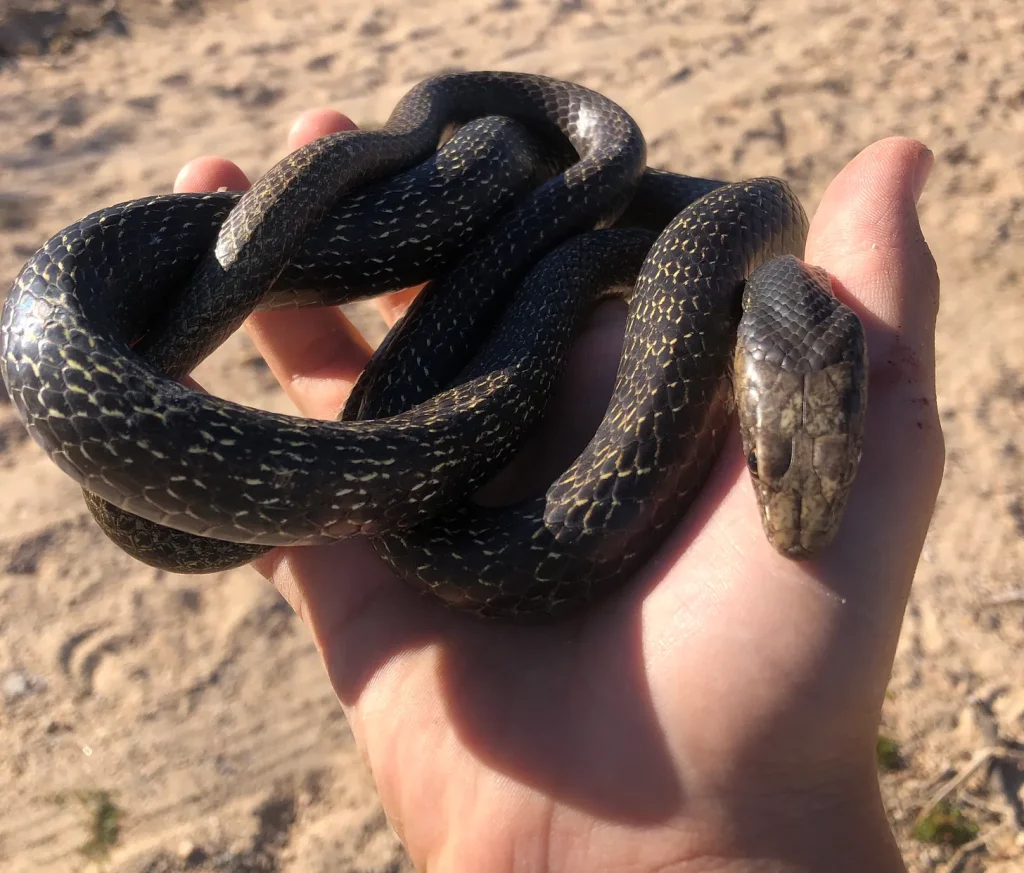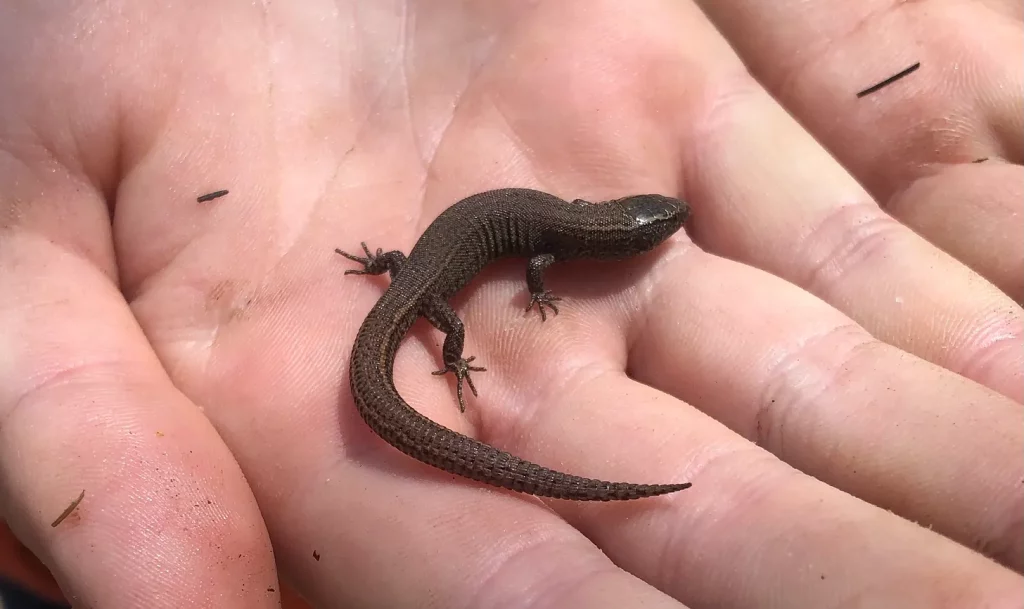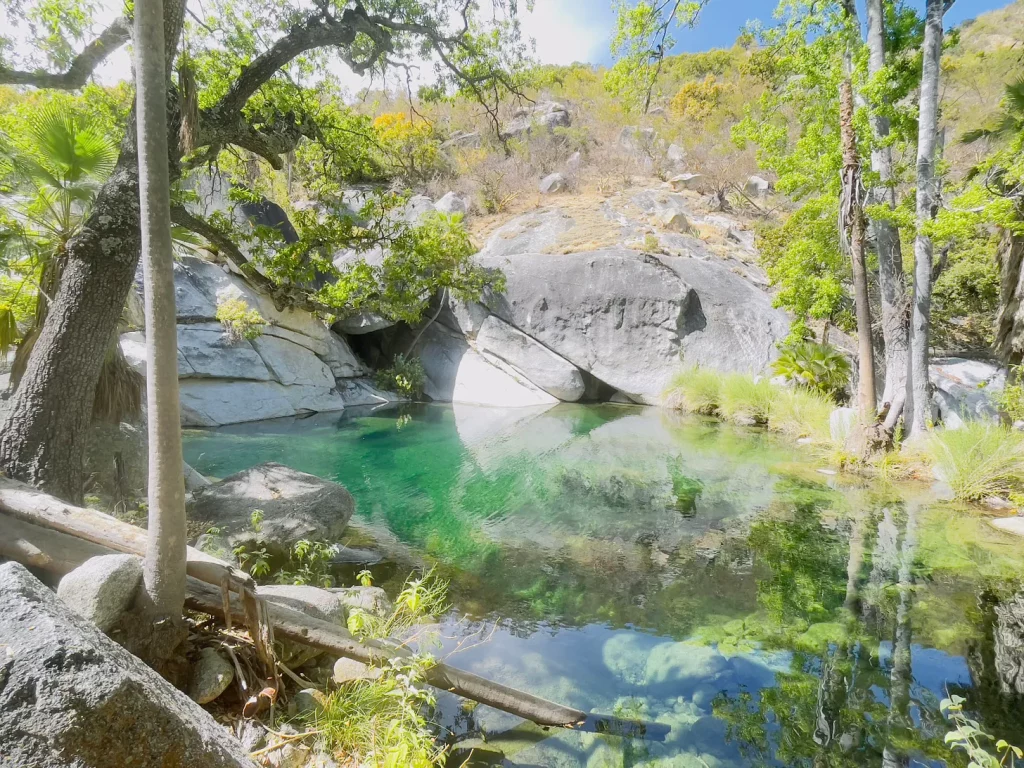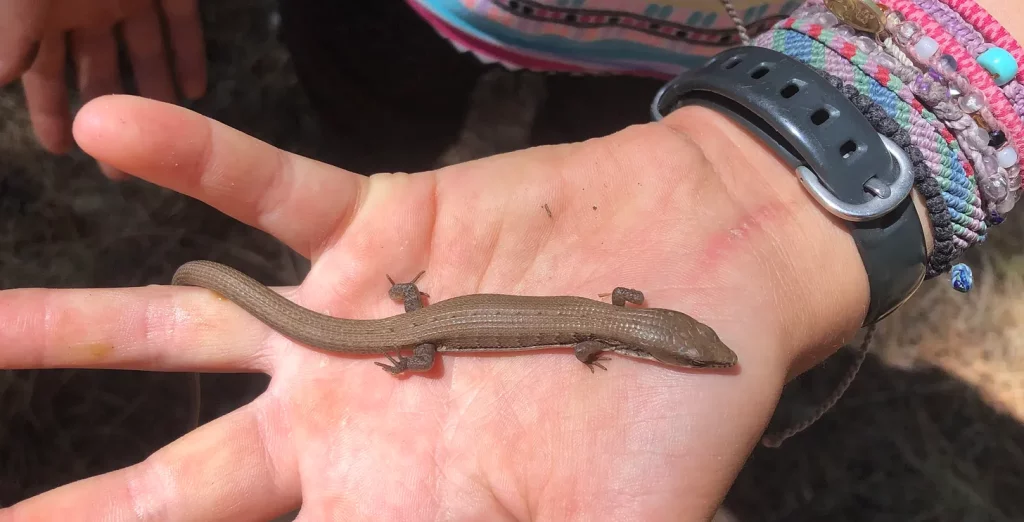
San Lucan Alligator Lizards (Elgaria paucicarinata) are striking, sneaky and extremely long-tailed lizards that inhabit many of the mountainous regions throughout the Baja Cape Region.
Here in LV/ES, alligator lizards are not really present. However, just above us in the hills of Rancho Cacachilas, alligator lizards live their secretive lives. They can be found throughout the Sierra de La Laguna, as well as a few other mountainous regions. They like to live in well-vegetated areas and grassy habitats.
These lizards are typically brown with some red or black markings. They have large mouths and expressions that perfectly mix those of grumpy old men and plotting evil geniuses. They are typically diurnal (active during the day), except for particularly hot days, when they may emerge at dusk or later. They like to tuck their front legs against their bodies and sort of slither through grass. Many individuals have very long tails, sometimes twice as long as the bodies, although they will drop them quite easily. Alligator lizards eat mostly insects, and those of larger carriage may even eat small mammals and birds.
For people from the West Coast of the USA and Canada, alligator lizards might look familiar since they live throughout much of California, Oregon and Washington, as well as southern British Columbia. Although these West Coasters are different species, they are all quite similar in appearance and behavior. – If you want to talk or walk reptiles, email ChanceStevens123@icloud.com
